The Detroit-Windsor Crossing
speculative urban design proposal for the great lakes megaregion
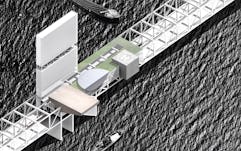
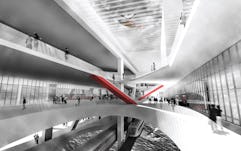
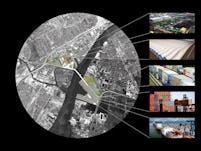
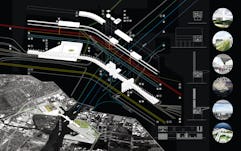
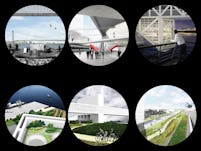

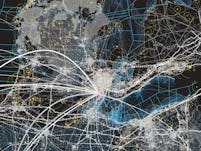
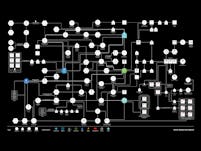
Situated within the regional mobility and energy systems of our Conduit Urbanism project, and located strategically at the U.S.-Canada border between Detroit and Windsor, the Crossing takes the form of a 2.4km long inhabited bridge spanning the Detroit River. In resistance to the privatization of government and environmental resources through the action of for-profit entrepreneurship, the Crossing houses the headquarters of the Coalition for the Governance of the Great Lakes Megaregion. Located at the virtually inscribed geopolitical border, it includes a series of assembly halls, with attendant hotel and support programs, where representatives of the over 56,000,000 Great Lakes Megaregional citizens convene to determine policy and action on shared resources, environmental protection, regional labor, transportation, trade, and other matters of megaregional importance that require cross-border collaborative decision making, policies, and governance.
On the Windsor side of the Crossing, a free trade zone is proposed: complete with container port and associated operational facilities, and connected via the St. Lawrence Seaway to the Atlantic. Located on the Detroit side is a staging area for the deployment of offshore wind turbines that will comprise a major part of the megaregional economy. Also located here is a nonprofit, extrajurisdictional medical complex that takes the form of a large courtyard structure set atop a plinth, providing access to specialized treatment as well as supporting medical, pharmaceutical, and biotechnology research. Intra-institutional research programs focusing on energy resources and aquatic and biotic systems also occupy the body of the bridge. On the adjacent deindustrialized waterfront lands, a compact logistics zone is combined with aqueous and land remediation processes, while producing public recreational landscapes at the water’s edge.
The megaregional maglev train stops mid-span, with shuttles connecting to local transit. The entire space of the bridge is a free zone, where national citizenship — and hence certain conditions of inclusion and exclusion — is suspended. At the center of the bridge, individuals can participate in formal and informal contexts of governance and decision-making regarding the future of the region through propinquity and confrontation. The Crossing both smooths out flows and complicates them, agglomerating diverse public programs along a line of mobility, juxtaposing “spaces of flows” with “spaces of place,” and identifying the site of the border itself as a space of access and politics.